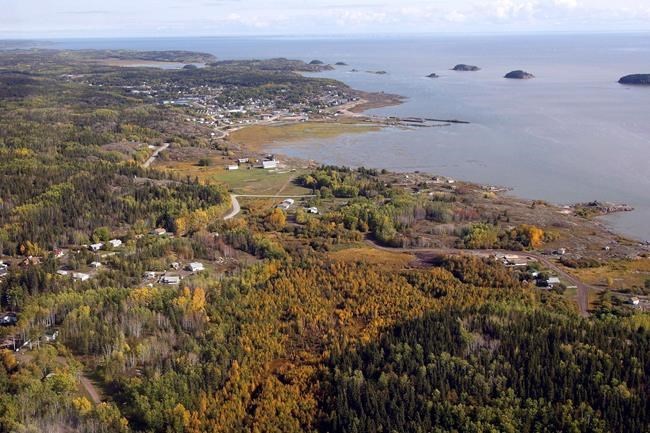A United Nations body has affirmed earlier findings that Canada's largest national park remains under environmental threats from dams, oilsands development and climate change.
The UNESCO report, issued Friday, concludes that the vast Wood Buffalo National Park on the Alberta-Northwest Territories boundary shouldn't lose its place on the list of World Heritage Sites at this time. Some things in the park, such as whooping crane numbers, are improving.
But it adds that about half of what makes the park a special place is deteriorating, mostly because of water quality and quantity.
"Major concerns remain about the lack of progress in addressing cumulative impacts from industrial developments around the property," the report says.
"Expansion of existing oilsands projects has continued without full consideration of the potential impacts."
The report is the latest step in UNESCO's ongoing examination of concerns originally expressed by the Mikisew Cree First Nation almost a decade ago. A report was filed in 2016 that found impacts from the Bennett Dam upstream in B.C., oilsands development and climate change had radically changed the amount and quality of water in the park, making it hard, if not impossible, for First Nations users to practise their treaty rights.
In 2018, Ottawa developed a plan to revive the park and Friday's report was an assessment of how well it's working.
"Important progress has been made in the implementation of some parts of the action plan," it says. "It is unrealistic to expect a reversal of trends in the desired outcomes in this short time frame."
Of 15 objectives for the park, UNESCO says two are improving, five are stable and seven are deteriorating.
"The (outstanding universal values) of the property remains highly threatened, with continued negative trends for key attributes," it says.
The report says a better understanding on the effect the Bennett Dam has had on water flows is needed. No future dams, such as the Amisk project, should go ahead without those studies, it says.
Five of the report's 17 recommendations pertain specifically to threats posed by the oilsands, upstream of the park.
It calls on Canada to conduct an independent risk assessment of the threat posed by oilsands tailings ponds "urgently and before the end of 2024."
"The mission notes that some representatives from Alberta continue to question the need for such an assessment arguing that the current management systems to address impacts were sufficient."
Environmental monitoring of the oilsands needs reform, the report says.
As well, reclamation plans for the industry's extensive tailings ponds must be developed that don't threaten the park.
"The mission is further very concerned about current proposals to allow for the release of treated (oilsands process water) into the Athabasca River."
And any new developments must be considered in the light of the industry's cumulative impacts.
A response from the federal government wasn't immediately available.
In a release, Gillian Chow-Fraser of the Canadian Parks and Wilderness Society said the report was timely, given recent concerns about releases of oilsands tailings.
"Industrial activities next to our major water sources, like the Peace River and Athabasca River, bear unacceptable costs – and we’re losing Alberta’s world-renowned heritage because of it.”
This report by The Canadian Press was first published July 4, 2023.
Bob Weber, The Canadian Press



